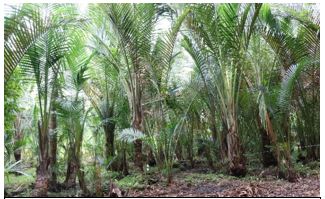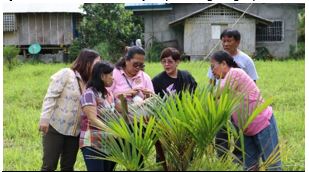
Furthermore, the sago palm can also be used for roofing and walling materials in building huts. Its leaves, which are more durable than nipa leaves, are made into thatches and can last for more than five years. On the other hand, the hard fiber bark is good for constructing walls and floors.
In order to promote and sustain cultivation of sago palms, a project of the Philippine Council for Agriculture, Aquatic and Natural Resources Research and Development of the Department of Science and Technology (DOST-PCAARRD) aims to improve the cultural management approaches in the propagation of the planting materials of sago palms and enhance productivity of existing sago stands.
The project, “Plantation Management for Natural Stands and Newly Established Plantation of Sago palm (Metroxylon sagu Rottb.) in Visayas and Mindanao,” is part of the monitoring and evaluation (M&E) initiatives of the Council’s Forestry and Environment Research Division (FERD).

As part of the activities of the project, FERD recently visited a sago plantation in Aklan State University (ASU).
The project is being implemented by the joint research team led by Dr. Quevedo of VSU, Engr. Anna Marie Pondog of Caraga State University (CSU), and Dr. Lelisa J. Teodosio of ASU. The research project started in March 2016 with a duration of three years.
For. Faustina C. Baradas, who serves as DOST-PCAARRD’s Industry Strategic S&T Program (ISP) Manager for Sago, led the monitoring and evaluation (M&E) team.
